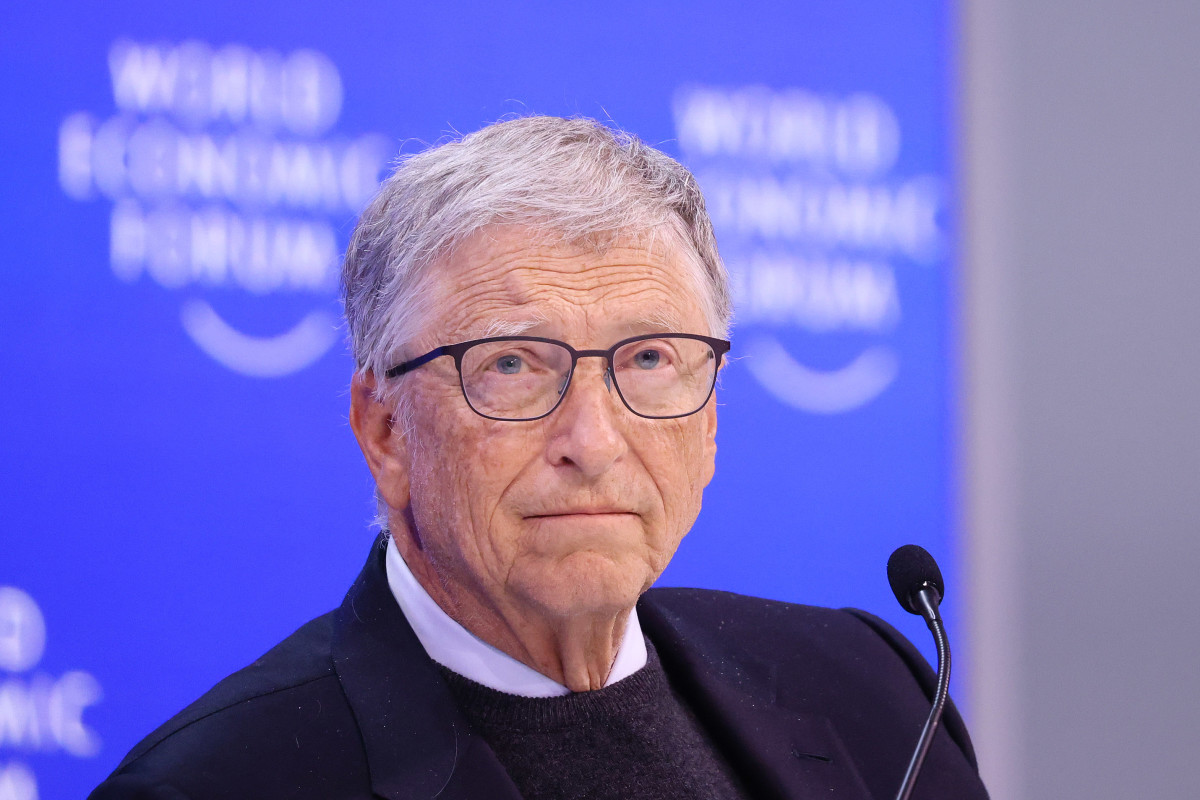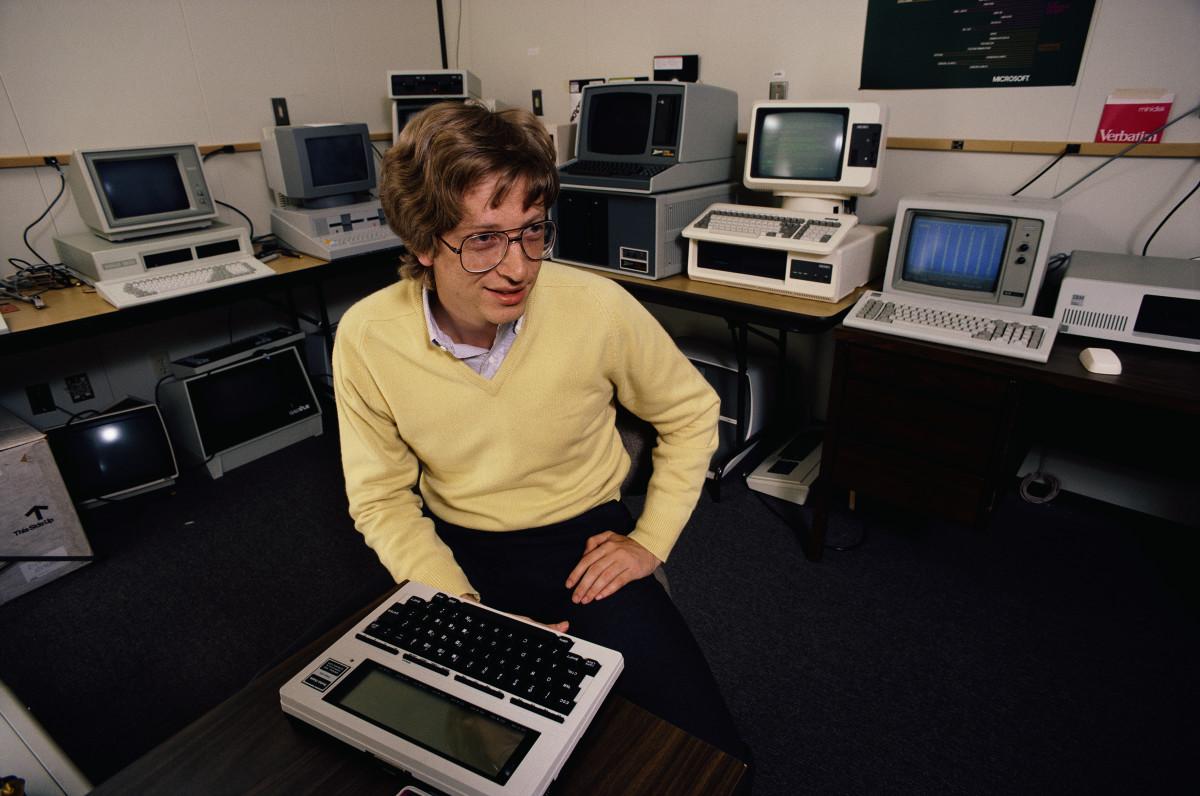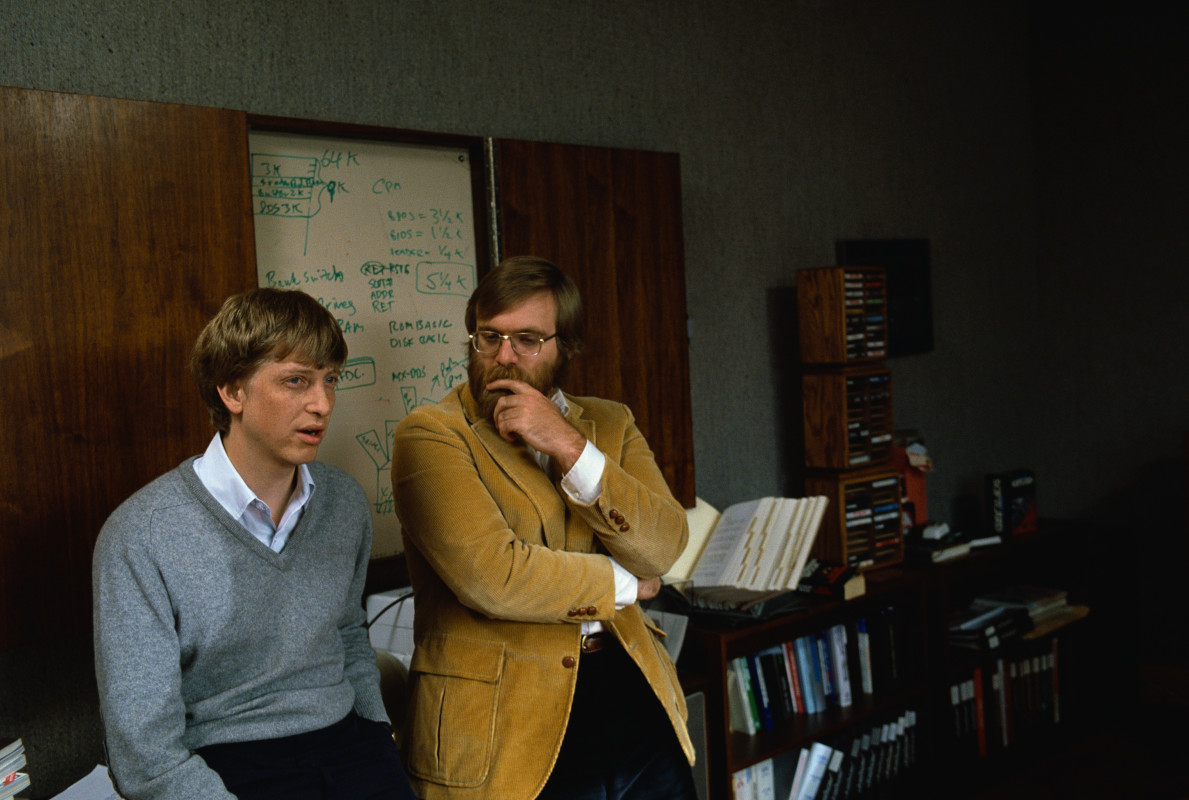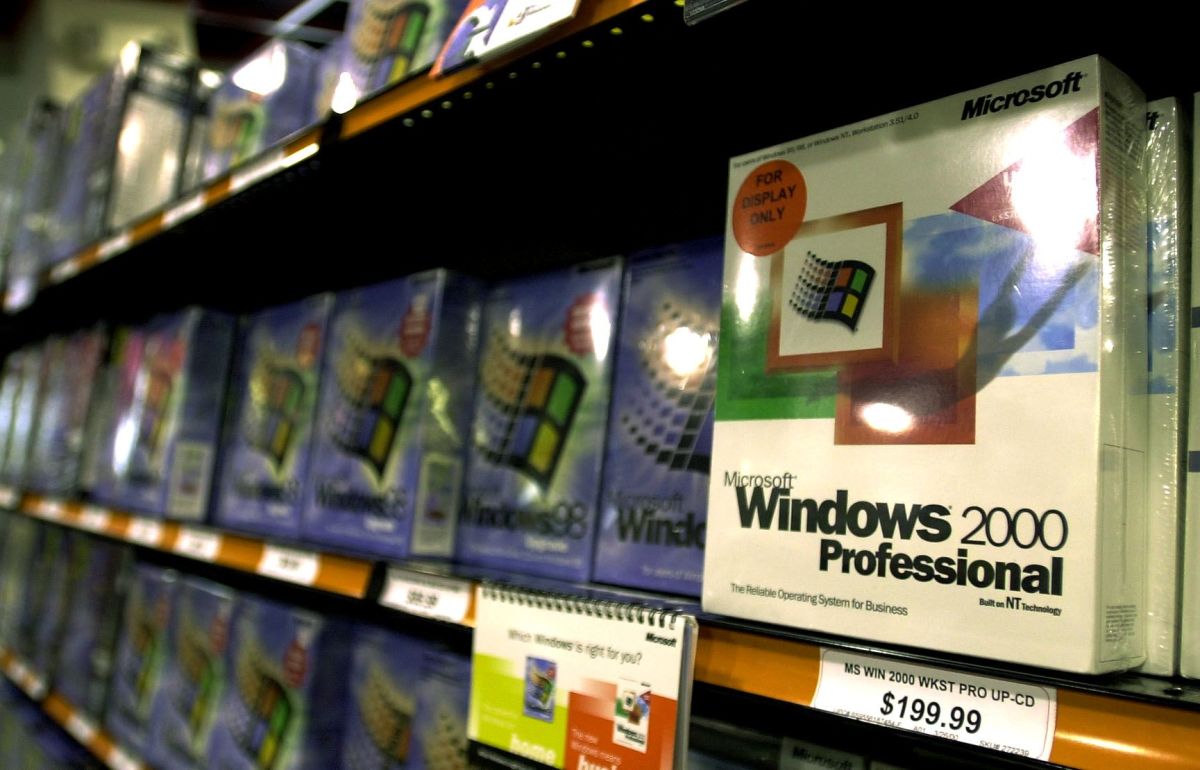A deep dive into Bill Gates' net worth
Worth more than $123 billion, the Microsoft co-founder-turned-global philanthropist has promised to part with “virtually all” of his money in his lifetime.


Hollie Adams/Bloomberg via Getty Images
It might seem easy to wax philosophical when you’re sitting on more money than most people could ever dream of, but, in a blog post published shortly before the birth of his first grandchild, Bill Gates took stock of his life’s achievements and concluded that money wasn’t really that important, after all.
“Being wealthy makes my life much more comfortable, but not more fulfilling,” wrote the co-founder of Microsoft (MSFT) - Get Free Report and perennial placeholder on Forbes’ list of World’s Billionaires. He added that there were only three things in life he needed to feel satisfied: His family, his friends, and doing work that mattered.
After spending much of his life dominating the “world’s richest” lists, Gates has vowed to give away 99.96% of his wealth through his charity, the Bill & Melinda Gates Foundation, which advances education and public health initiatives around the globe. His goal is to make the world better for future generations, including his young granddaughter, Leila — and he has given away an astounding $59 billion in the process.
What is Bill Gates’ net worth?
Bill Gates is a millionaire thousands of times over: As of February 2024, Forbes reported his net worth at over $123 billion, most of which came from his position as the largest individual shareholder of Microsoft, which he started with Paul Allen in 1975.
Gates still holds a 1.38% stake, or roughly 103 million shares, in the tech giant. Microsoft's price has soared in the last few years due to its visionary ventures into artificial intelligence, cloud computing, and the gaming industry —thanks in large part to the leadership of its current CEO, Satya Nadella.
Microsoft finished 2023 with a gain of nearly 57% and now boasts a $3 trillion market cap, ahead even of rival Apple (AAPL) - Get Free Report.
If Gates had held onto his 45% initial stake in Microsoft after the company’s 1986 IPO, he would be a trillionaire today.
But hindsight is always 20/20, and back in 1987, when Microsoft’s star was still on the rise, Gates became the world’s youngest self-made billionaire at age 32 — which was not too shabby, either. Gates has been ranked atop the list of world’s richest people a whopping 25 times since.
Who is richer than Bill Gates?
Despite his entrance into the three comma club, Bill Gates is not the wealthiest person in the world. As of February 2024, that distinction goes to Bernard Arnault and family, which controls the LVMH empire, including brands like Louis Vuitton, Tiffany & Co. and Sephora. Their fortune is currently estimated at $211 billion.
In fact, Bill Gates doesn’t even make the top 5 anymore —here’s where he stands, and who’s ahead of him:
Top 10 richest people in the world
| Rank | Name | Net Worth | Company |
|---|---|---|---|
1. | Bernard Arnault & family | $212 billion | LVMH |
2. | Elon Musk | $197.5 billion | Tesla |
3. | Jeff Bezos | $194 billion | Amazon |
4. | Mark Zuckerberg | $168.4 billion | Meta |
5. | Larry Ellison | $143.8 billion | Oracle |
6. | Warren Buffett | $128.5 billion | Berkshire Hathaway |
7. | Bill Gates | $124.1 billion | Microsoft |
8. | Steve Ballmer | $120.7 billion | Microsoft |
9. | Larry Page | $118.2 billion | |
10. | Sergey Brin | $113.3 billion |

©Doug Wilson/CORBIS/Corbis via Getty Images
Who is Bill Gates?
Bill Gates probably doesn’t mind where he stands among his fellow billionaires — after all, he’s not trying to hold onto his money. In 1991, five years after Microsoft’s IPO, Gates made his first major gift, a $12 million donation to the University of Washington that endowed a molecular biology research lab.
In 1994, he and then-wife Melinda sold $94 million worth of Microsoft shares and started the William H. Gates Foundation. (In 2000, it combined forces with the Gates Learning Foundation to become the Bill & Melinda Gates Foundation, the entity we know today.)
In 2010, Gates, along with his buddy, famed investor Warren Buffett, made the Giving Pledge, vowing to give away half of their wealth to charitable causes. And just where does Buffett send the bulk of his money? The Bill & Melinda Gates Foundation, naturally. Aside from the Gates’ themselves, Buffett is the foundation’s largest contributor, donating a whopping $35.7 billion to its initiatives since 2006.
Related: Halloween Squishmallows: How these holiday collectibles are making Warren Buffett rich
Coincidentally, Gates believes that his philanthropy is very similar in nature to his work at Microsoft. “[As a philanthropist,] I get to use 80% of the same type of thinking that I exercised at Microsoft,” he told Village Global, noting how both roles involve teamwork, supporting engineers, and figuring out what needs to be added to make the greatest possible impact.
The only difference, he says, is that through the Gates Foundation, “our profit is lives saved, as opposed to a monetary measure.”
Bill Gates’ early life
Little would the skinny, often-bullied boy know the tremendous impact he would one day make in the world—both through his business and charitable ventures.
Born on Oct. 28, 1955 in Seattle, Gates’ first introduction to digital technology was in the form of a Teletype Model 33 ASR machine at his prep school, the Lakeside School. The rudimentary machine sent and received typed messages and was connected to a mainframe by a telephone line.
When he was 13, Gates wrote his first software program: A tic-tac-toe game that pitted the user against the computer. Noticing his talents, his math teacher allowed him to leave class to work on it.
Later, Gates and a group of friends, which included Paul Allen, Microsoft’s co-founder, started the Lakeside Programmers Club, where they studied different coding languages and, in return for free time on the computer terminal, helped to automate their school’s scheduling system. ©Doug Wilson/CORBIS/Corbis via Getty Images
Did Bill Gates go to college?
Gates received a near-perfect score on his SATs of 1590 out of 1600 and enrolled in Harvard University in 1973, although he famously would never graduate.
Gates took math and computer science classes and lived in Currier House, which is where he befriended Steve Ballmer, who would later lead Microsoft as CEO from 2000–2014.
In 1974, Paul Allen dropped out of Washington State University and moved to Boston, taking a job as a computer programmer with Honeywell.
One day, as Allen walked through Harvard Square he saw an Altair 8080 computer on the cover of Popular Mechanics magazine — it would become a pivotal moment for the two. Allen bought the magazine and raced to Gates’ dorm room. Both knew that the time was nigh to develop their software ideas.
Together, they sent a letter to the MITS, the computer’s manufacturer, offering their consulting services to write software using the BASIC programming language. MITS responded favorably; Gates took a leave of absence from Harvard, and they packed up and moved to Albuquerque, where the company was located. In the process they founded Micro-Soft, and the rest, as they say, is history. HENNY RAY ABRAMS/AFP via Getty Image
Why is Microsoft so important?
Micro-Soft, a blend of the words “microcomputer” and “software,” would soon lose its hyphen — and Gates would never make it back to Harvard.
The company’s early products were variants of the BASIC programming language found in computers of the era; Gates was responsible for reviewing every line of code they made. But as the company grew, Gates’ role changed into that of a manager, and later, a chief executive.
In 1980, Microsoft forged a game-changing partnership with IBM, which had requested an operating system for their home computers. Gates and Allen created the PC-DOS for only $50,000, but the notoriety they gained from the project was priceless.
Soon, other computer makers would roll out their own PC models, and the version of the DOS operating system Microsoft made for these systems, known as MS-DOS, would generate $430,000 in 1980 alone.
In 1981, Gates and Allen officially incorporated Microsoft and relocated their business to Washington. Gates became president and Allen vice president (he would retire in 1981 after a Hodgkin lymphoma diagnosis).
Through Microsoft, Gates and Allen were not only savvy businessmen; they also became leaders in a technological revolution. The U.S. Census reported that as of 1984, only 8% of U.S. households owned a computer. By 2000, half of all households owned one — 90% of which were powered by Microsoft Windows’ operating systems. Gates’ dream to put “Windows everywhere” had become a reality.
Sales of MS-DOS would exceed $60 million in 1986, and Microsoft would go public that year, on March 13. By the end of the decade, it would become the largest PC software company in the world.
Through the years, Microsoft rolled out subsequent generations of operating systems, like Windows, Windows 95, and Windows XP; in addition, Microsoft wisely spread its wings into other digital realms, such as the Xbox video gaming system, which it launched in 2001; Microsoft Office (the earliest version came out in 1988); and the Azure cloud computing platform in 2008.
Each new innovation added to Gates’ net worth.
Bill Gates’ net worth through the years
| Year | Net worth | Notable events |
|---|---|---|
1986 | $315 million | Microsoft goes public |
1987 | $1.25 billion | Microsoft releases OS/2; Gates becomes the world's youngest self-made billionaire |
1990 | $2.5 billion | Windows 3.0 launches |
1995 | $14.8 billion | Windows 95 comes out; Gates' first book, "The Road Ahead," is published |
1997 | $39.8 billion | Windows Explorer 4 launches and Microsoft invests $150 million in Apple, ending a years-long feud |
1999 | $85 billion | Gates steps down as chief executive, naming Steve Ballmer as his successor |
2000 | $63 billion | The U.S. government rules that Microsoft violated the Sherman Antitrust Act and ordered the company to be broken up; this ruling is overturned in 2001 |
2008 | $58 billion | Gates announces he is stepping down from his full-time role at Microsoft in order to devote more time to his charitable projects |
Gates weathered some major storms at the helm of Microsoft, including the bursting of the dot-com bubble in 2000, which had caused many technology-related startups to go out of business.
In addition, Microsoft faced an antitrust lawsuit in the late 1990s: Federal regulators charged that the company had violated the Sherman Act by illegally monopolizing the computer market and using unfair business practices against competitors. A federal judge agreed and ordered that the company should be broken apart, although an appeals court later overturned that ruling in 2001. Microsoft shares dropped 63% in 2000 — only to regain 50% in 2001.
View the original article to see embedded media.
How much is Bill Gates’ foundation worth?
In 2008, Gates stepped down from his role at Microsoft to focus full-time on his philanthropic efforts.
You could say he has been doing a terrific job at emptying his pockets—there have even been several video games devoted to the theme of spending Bill Gates’ money.
Since inception, the foundation which bears his name has provided $71.4 billion worth of grants to initiatives that reduce poverty and enhance healthcare in some of the poorest communities around the world. The foundation has a specific focus on Africa; Gates has said that by the year 2050, 90% of the poorest populations will reside on that continent.
Its recent projects have included a $100 million effort to raise awareness and combat HIV, Tuberculosis, and malaria in 2023. It has also funded maternal and child health projects in Africa, and committed more than $2 billion to fight Covid-19 since 2020.
Bill & Melinda Gates Foundation 10 largest projects funded
| Size | Grantee | Purpose | Amount Committed |
|---|---|---|---|
1. | GAVI Alliance | Increasing equitable and sustainable use of vaccines | $1,600,000,000 |
2. | GAVI Alliance | Increasing equitable use of vaccines in lower income countries | $1,543,757,800 |
3. | The Rotary Foundation of Rotary International | Global Polio eradication | $1,285,210,000 |
4. | United Negro College Fund, Inc. | The Gates Millennium Scholars Program | $1,264,876,898 |
5. | GAVI Alliance | General operating support to the GAVI Alliance for their strategic goals | $953,600,000 |
6. | The Global Fund to Fight AIDS, Tuberculosis and Malaria | Supporting the Global Fund to Fight AIDS, Tuberculosis, and Malaria | $846,400,000 |
7. | Gates Medical Research Institute | Developing transformative therapies, biologics, vaccines, and biomarkers that will improve the lives of the world’s poorest populations | $844,002,778 |
8. | The GAVI Campaign | Supporting the immunization of children in 74 countries through the purchase of new vaccines | $750,000,000 |
9. | The Global Fund to Fight AIDS, Tuberculosis and Malaria | Providing financial support to country-driven prevention, diagnosis, treatment and education programs working to free the world of HIV/AIDS, tuberculosis and malaria | $750,000,000 |
10. | The Global Fund to Fight AIDS, Tuberculosis and Malaria | Supporting the Global Fund to Fight AIDS, Tuberculosis, and Malaria | $731,783,690 |
Bill Gates’ divorce
After 27 years of marriage and 3 children, Bill and Melinda Gates announced they were divorcing in May 2021. The couple had a marriage contract, and details of their divorce settlement remain private, but speculation abounds as to who got to keep what.
The settlement reportedly included a $76 billion payout for Melinda, which cemented her status as one of the most powerful women in philanthropy today — she ranked #66 on the Forbes “Billionaires List” in 2023.
The couple also split an incredible array of assets, such as their $124 million art collection, which included works by Leonardo da Vinci, Winslow Homer, and Childe Hassam. They also sliced up a spectacular portfolio of global real estate properties, including an oceanfront mansion in Del Mar, Calif., an equestrian ranch in Rancho Santa Fe, Calif., and a horse farm in Wellington, Fla..
Gates reportedly kept his main residence, a $131 million waterfront mansion in Medina, Wash. that he affectionately named “Xanadu 2” after the mansion in the movie “Citizen Kane.” The sprawling, 66,000-square-foot compound is replete with a spa, a trampoline room, and climbing gym made out of real stone from a mountain in the Pacific Northwest. Its lushly landscaped property has a stream brimming with salmon and trout, and a private beach with sand imported from Hawaii.
Gates also got to keep his private plane, a Bombardier Challenger 604 business jet, which he purchased in 1997 for $21 million — although he has received criticism from climate change groups due to the pollution he causes by flying private.
What is Bill Gates doing now?
In addition to his work with the Gates Foundation, Gates has admitted that as he has gotten older, he has been taking more vacations than he used to (the famous workaholic once boasted that once Microsoft was off the ground, he "only" put in 8-hour days at the office on the weekends). He spends time with his family and now his grandchildren, and continues his love of books: The voracious reader has said that as he handed the reins off at Microsoft, he started educating himself on world issues, fomenting his charitable bent.
“Reading fuels a sense of curiosity about the world, which I think helped drive me forward in my career and in the work that I do now with my foundation,” he told Time magazine.
His Gates Notes website devotes a section to his current recommendations, which he frequently updates.
Related: Veteran fund manager picks favorite stocks for 2024
What's Your Reaction?


























































